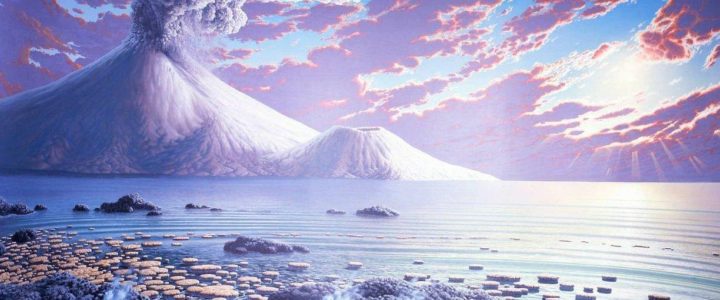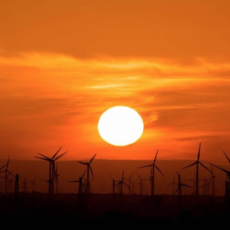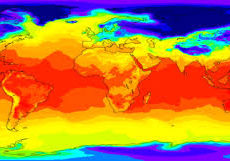
In the next few weeks, we’ll be taking a look at climate. We’ll investigate our planet’s past, present, and discuss what could be the future of a habitable Earth.
Since the Earth first formed around 4.6 billion years ago, our planet’s climate has been changing. Over those billions of years, temperatures have ranged from sub-zero freezing to upwards of an almost unfathomable 3,600°F.
The first evidence scientists found of life on our planet dates back to 3.9 billion years ago during the Archean Eon. The life that emerged is believed to have been photosynthetic, but at that time, Earth’s climate was much different than today. Our sun was much dimmer, around 70% solar luminosity, which should have meant the resulting surface temperature to be below zero. But scientists have found evidence of liquid water from this period. How did the Earth have liquid in these freezing temperatures? To explain this, scientists have hypothesized a greenhouse effect was in place that raised CO2 levels 100 to 1000 times above today’s levels, and allowed for the presence of liquid water.
Today, our sun outputs 40% more heat, and thankfully our atmosphere has lower levels of CO2. A greenhouse effect at those prehistoric CO2 levels today would raise the temperature to a level that would make the Earth uninhabitable to most species.
But… water?
The earliest evidence of the Earth’s climate found within the Earth’s crust provides us with evidence of rain and rivers that dates to around 3.7 billion years ago. And while we don’t know the exact temperature from this, we do know that it has to be somewhere between 0°C and 100°C to support water in its liquid form. The atmosphere during this time was heavily methanic, until around 2.4 billion years ago, when, for the next 230 million years, Earth’s atmosphere “quickly” transformed from anoxic (greatly deficient in oxygen) to closer to today’s state.
Wait. Now, ice?
Around the same time, scientists have found evidence of the first Ice Age occurring. It does follow that the removal of methane and addition of oyygen and carbon dioxide, along with the rapid decline of methane-producing microbes replaced with organisms exhaling oxygen into our atmosphere, was the cause.
Thousands of years of data shows us a direct correlation between the amount of carbon in our atmosphere and glacial (or frozen water) volume on our planet.
What’s next?
Since the last Ice Age ended, about 11,700 years ago, our Earth has experienced a rise in the carbon dioxide in our atmosphere that is consistent with our climatic history. But in the last 800,000 years, the amount of carbon dioxide has peaked at 300ppm only once. And since the 1800’s we have reached a level of 400ppm. We understand that this occurred before approximately 400 million years ago when our planet was 3 degrees warmer, and the sea levels much higher than today.
Does this indicate that we are headed for a much warmer planet with higher sea levels? Possibly. That is why we look for evidence of previous changes in our planetary climate history. Studying the Earth’s climate history can help scientists predict how our current conditions and continuing trends will affect tomorrow’s climate. To be clear, an increase in our sea level would affect a huge portion of our habitable landmass. But rising sea levels are not the only consequence of climate change…
Next week, in Part II of our series on climate, we’ll look at the history of how changes in our climate have affected our populations.




Pingback:History: Real World Consequences of Our Changing Climate – swrm
Pingback:Climate Science History: Causes and Consequences of Climate Change – swrm